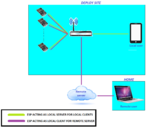mrfarhanghouri
Banned

Please help me.
My question is about the technologies we need for internet of things.
I read this article on IOT (https://karachi.storeboard.com/blogs/electronics/iot--arduino-plus-web-development/831863 ) but the problem is a confusion.
Is it necessary to use Arduino and Website Development for INTERNET OF THINGS ?
Can I not use Android app for this purpose?
Please help.
My question is about the technologies we need for internet of things.
I read this article on IOT (https://karachi.storeboard.com/blogs/electronics/iot--arduino-plus-web-development/831863 ) but the problem is a confusion.
Is it necessary to use Arduino and Website Development for INTERNET OF THINGS ?
Can I not use Android app for this purpose?
Please help.



